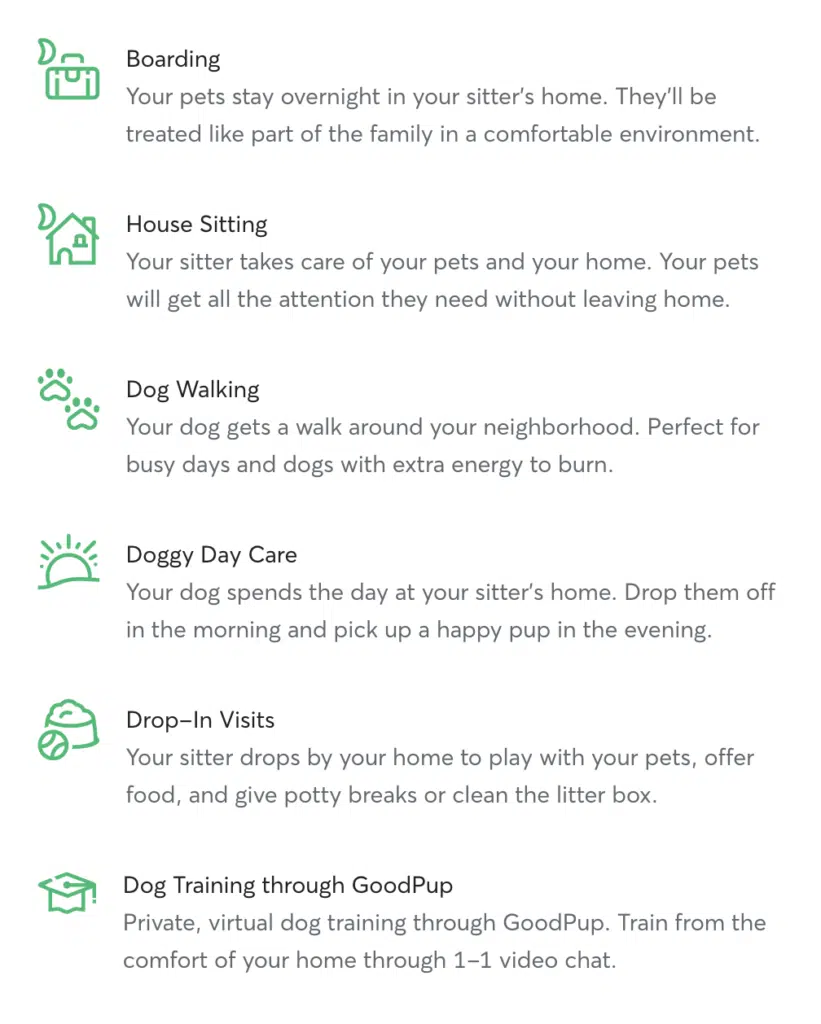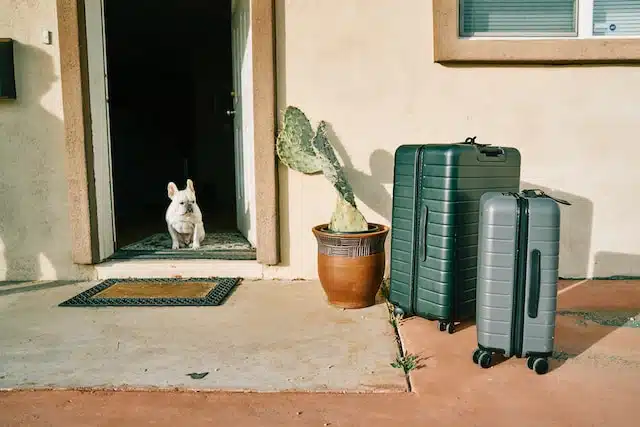What To Do with Pets While Traveling
This post may contain affiliate links, which means I’ll receive a commission if you purchase through my link, at no extra cost to you.
It’s estimated that 70% of US households have a pet, so many people run in to the issue of what to do with their fur babies when they travel. Thomas and I have 2 cats who we absolutely love, but we are also very comfortable leaving them home alone when we travel. That wasn’t always the case though, so we’ve tried multiple strategies and between my experiences and those of friends and family, here are my recommendations for what do to with your pets when you travel. Keep in mind these are all very dependent on the type of pet you have, it’s age and medical needs, etc. so do what’s best for you and your pet.
Leave Them Home Alone

This is what Thomas and I do 95% of the time. Once we discovered the incredible inventions that are automatic feeders + water dispensers, it was game changing. The automatic feeder we have can feed 2 cats for 13 days before needing to be refilled and the water lasts just about as long. The feeder is plugged in and on a timer, but it does have backup batteries in the case of a power outage. If we’re worried about the water running out, we fill another pot of water and put it nearby. If we’re gone for an extended period of time, we’ll also set up an extra litter box (maybe one day we’ll get fancy with an auto-cleaning litter box).
I love my cats and worry about them when we’re away, so to put my mind at ease, we bought an extra security camera and set it up next to the cats’ food/water. Ours is from SimpliSafe and sends an alert to our phones when there’s motion detected and we can watch a recording to know our cats are alive and fed. The camera is smart enough to know the difference between a cat (or small dog) and a human, so the cats walking by doesn’t set off our alarms or call the police. It gives me peace of mind knowing the cats are okay and if anything was ever wrong, I could have someone come check on them.
We also take a few extra minutes before we leave for a trip to close doors to any rooms we don’t want them accessing and hiding anything they may destroy. We’re very lucky and our cats aren’t generally destructive, but they did once eat an entire box of Chomps meat sticks we’d left out on the counter while we were away! Lesson learned – loose papers and food always get put away before we leave.
My favorite part about this strategy is definitely the cost, since it’s free except for the initial investment in equipment (but we also use the automatic feeder to feed them when we’re at home, so it’s totally worth the cost). We travel so much that if we had to spend money on the cats every time we left, it would put a significant dent in our travel budget.
Pet Sitters

If you’re not comfortable leaving your pet alone, you can ask (or hire) someone to pet sit. This may mean stopping by every so often to take care of the pet or having this person stay in your house while you’re away. It might end up being a free option depending on your situation. Friends/family may be willing to help you out, but there are also sites where you can find house/pet sitters who stay in your house and take care of your pets in exchange for free lodging – it’s a win-win. One example is Trustedhousesitters.com, who charges an annual fee for unlimited pet sitters. I’ve never personally used them, but I’ve heard great things from people who have been on the other end and pet sit so they can get free lodging.
For paid options, apps like Rover are great if you need someone to come and walk your dog, etc. They offer everything from drop-in visits to dog training. I’ve had family members use Rover and been very happy with it. The Rover usually sends photos/videos of your pet so you can ensure they’re doing okay while you’re gone.
Take Them With You

This is very dependent on what type of pet you have (or how long of a trip you’re going on), and mostly applies to dogs. If you’re taking a road trip, bringing your dog along can be easy, but be prepared for extra hurdles if you’re flying. When we took our cats on a flight when we moved to Chicago, the carrier had to be a specific size to fit underneath the seat and we were charged $100/cat one-way and had to show proof of vaccinations for them. Bigger dogs may present even more of a challenge, but if they’re a service dog, you will likely have a lot more leniency. Check the airline’s website for their specific policies (an example if you’re flying Southwest can be found here).
Note that bringing pets internationally is often incredibly difficult and expensive. I’d personally only jump through these hoops if I was moving abroad, as it’s not going to be worth it for a vacation.
Boarding
Pet boarding is one of the most expensive options on this list (especially with multiple pets), but we’ve had really good experiences when we used to board our cats (before we discovered the automatic feeder). Our cats were always in their own room together and had toys to play with and were extremely well taken care of. You can research boarders near you to find ones in your price range with options you’re comfortable with – for example, I’ve seen some that keep dogs separated and others that allow them to socialize.
The biggest hassle I found with boarding was simply that they aren’t open for pickups/drop-offs 24/7, so you have to plan accordingly. We also often had to supply our own food or be charged extra. These things aren’t a big deal but good to know up front to avoid surprises.
Do you have a pet? What do you do with them when you travel? Leave a comment and let me know your go-to strategy.
You may also like:

